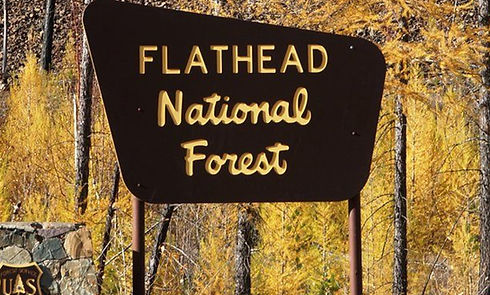Flathead National Forest

Planting in this forest.
In 2022, Flathead National Forest undertook the Whitefish Municipal Watershed Whitebark Pine Restoration project, planting 8,400 whitebark pine seedlings in areas affected by past wildfires and susceptible to future high-intensity fires. This initiative aimed to restore the declining whitebark pine population, a keystone species vital for maintaining high-elevation ecosystem stability and providing critical wildlife habitat. The project also sought to enhance the watershed's resilience to insects, disease, and wildfires, thereby protecting the municipal water supply for the community of Whitefish.
In 2021, the Acquired Lands Restoration Planting project focused on rehabilitating newly acquired lands within the forest. A total of 6,620 native tree species were planted to restore these areas to their natural conditions, improving biodiversity and supporting various wildlife habitats.
The Trail Creek Wildfire Recovery project, initiated in 2019 and continued through 2020, addressed the aftermath of the 2015 Trail Creek Fire, which severely impacted 21,100 acres around the Spotted Bear Ranger District. In 2020, 104,864 ponderosa pine and western larch seedlings were planted to replace the lost forest cover, focusing on species known for their longevity and resilience to fire, insects, and disease. This effort aimed to accelerate the recovery of the forest ecosystem, stabilize soils, and restore habitats for species such as elk, deer, and various bird populations.




Location
Montana, USA
Project Type
Reforestation
Environmental Benefits
Wildlife Habitat Restoration
Enhanced Biodiversity
Soil Stabilization and Erosion Control
Watershed Health Improvement
Climate Resilience and Carbon Sequestration
About this forest
Flathead National Forest, located in northwestern Montana, spans over 2.4 million acres of rugged mountains, dense conifer forests, and pristine lakes. It provides vital habitat for diverse wildlife, including grizzly bears, elk, and lynx. The forest offers exceptional recreational opportunities such as hiking, fishing, and skiing while ongoing restoration efforts focus on preserving its ecological integrity and resilience.




